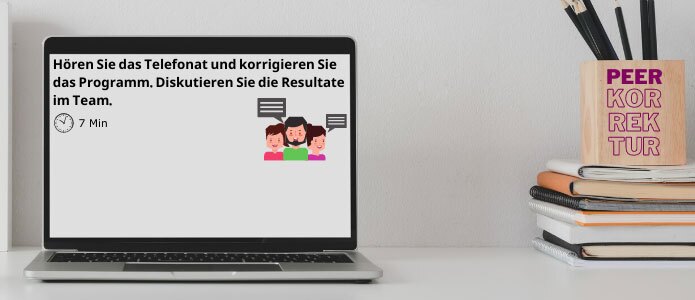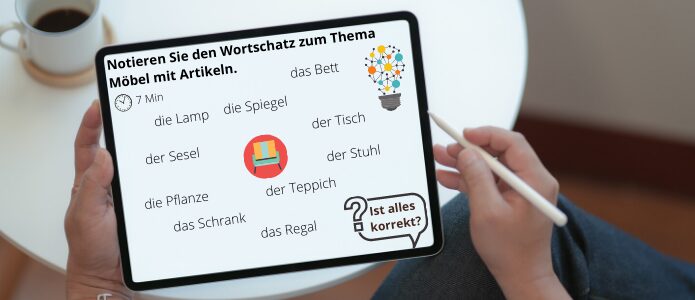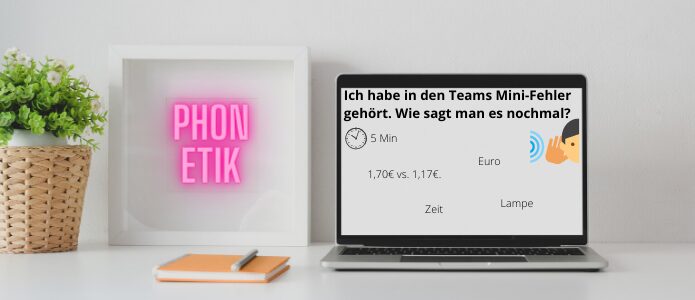Online Language Teaching
New Medium, New Opportunities: Error Correction in Virtual Teaching

Teaching online poses a number of new challenges for teachers. Teachers feel they have to be careful about correcting mistakes for fear of discouraging, or even losing learners in the new medium. But do you really have to correct mistakes at all? If so, how can you do it without causing frustration?
By Dr. Steffi Krause
Why do you need to correct?
As a teacher, you never want to discourage learners by correcting them.We have long since come to understand that making mistakes in the course of learning a language does not reflect a lack of language skills. On the contrary, it’s a perfectly natural aspect of language acquisition. Mistakes reflect a learner’s current level and show where review and consolidation may be needed. So error correction should not be dreaded as a potential minefield, but welcomed as an opportunity for language learners to learn from their mistakes. And it’s an important part of online teaching. Not only that, but, as in traditional face-to-face teaching, there are methods to turn error correction into an experience that actually engenders a sense of achievement in learners.
Think about your approach to error correction
Before you start planning error correction activities, it’s helpful to think about your usual approach. Consider briefly the following questions:What types of mistakes do you usually correct and how? In which activities do you make, or refrain from making, corrections?
- When do you correct mistakes?
- In what situations do you intervene immediately or refrain from intervening?
- What do you do after correcting mistakes?
- Who corrects the mistakes in your lessons?
- How do you get students to correct their own mistakes?
Using the new medium effectively
These basic principles also apply to online teaching. What is more, you can take advantage of the tools available in the new medium. You might find that personal contact in face-to-face lessons often helps students accept corrections as a form of well-meaning and constructive criticism. You can take advantage of the personal distance, on the other hand, created by the online medium to dissociate individual learners from their mistakes, so that each individual mistake becomes a learning opportunity for everyone. So make the most of the tools that digital teaching has to offer: webcams, pointing functions, emojis and various layouts can serve as substitutes for facial expressions and gestures.- Quick corrections on the board can be carried out online using chat, notes on the whiteboard or the writing function for learners.
- You can correct a student’s mistakes discreetly in a private chat so the others won’t even notice.
- You can use the microphone function to make corrections orally yourself or have the group do it.
- The chat function, which is (at least conceptually) oral and does not interrupt the verbal flow of the lesson, also lends itself to corrections by you or the group.
Planning corrections
To make the most of these tools, try to work correcting sessions into your lesson planning. One exercise that is suitable for every level is called Fehlerdetektiv or “Mistake Detective”.Bring some mistakes drawn from an online session or from the students’ own writing. In small groups, they can look for mistakes and correct and discuss the faulty sentences. You can then consolidate the error correction in a plenary session. Make sure to limit the number and types of mistakes to ensure the systematic success of this exercise. Focus on recurring mistakes that will be of interest to several learners.
Also allow for peer correction sessions in all listening and reading activities.
In this case, learners discuss the input in “breakout rooms” before consolidating the findings in a plenary session. This approach increases actual student talking time (STT) enormously. Experience shows that, thanks to group intelligence, learners working together almost always arrive at the right answer. If not, at least the same mistake has been made by several learners, not just one.
Allot some time for corrections even at seemingly “spontaneous” moments, e.g. during brainstorming or vocabulary sessions, etc.
You can also plan to correct pronunciation errors. You’re probably already familiar with the systematic mispronunciations peculiar to your learners’ first language, e.g. the “ch” sound or diphthongs among American students, so you also know in which contexts these problem sounds are likely to come up. Collect mistakes as you virtually roam from one group to another and then discuss them in a plenary session. It is best to intervene in groups only when the mistakes interfere with communication.
Create routines
With the aid of these methods, you can also create online correction routines that will provide structural orientation, which is important for your students. Furthermore, try to make your approach to error correction as transparent as possible, e.g. by arranging with the class when, how and with which tools corrections should and may be made. Try to involve your learners in the correction process as often as possible and use the principle of group intelligence to your advantage.
References
Ballweg, Sandra/ Drumm, Sandra/ Hufeisen, Britta/ Klippel Johanna/ Pilypaityte, Lina (2013): DLL 02: Wie lernt man die Fremdsprache Deutsch? Stuttgart: Klett Sprachen
Schormann, Matthias/ Schlak, Torsten (2011): “Hilfreich oder ohne praktischen Nutzen? – Die Forschung zur mündlichen Fehlerkorrektur im Zweit- und Fremdsprachenunterricht“. In: Zeitschrift für Fremdsprachenforschung 22 (1), 43-84. Baltmannsweiler: Schneider Verlag Hohengehren GmbH



